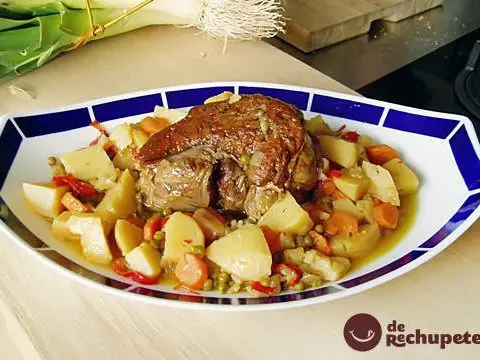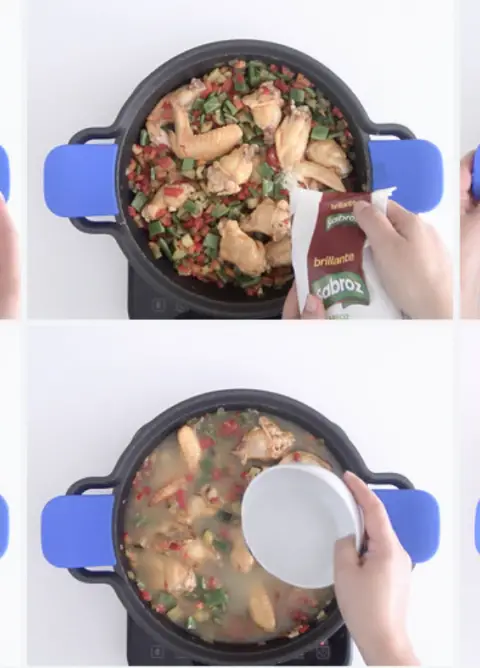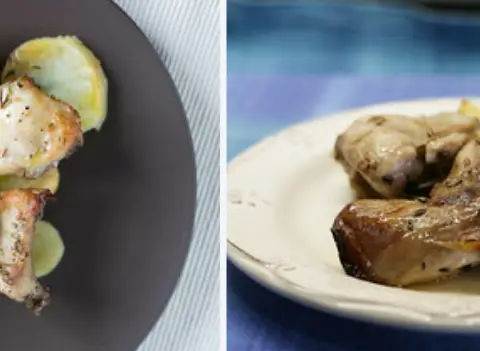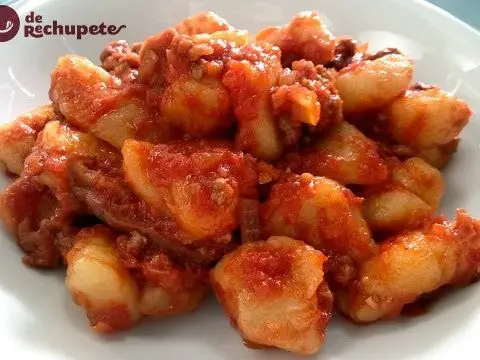
Info.
- Easy
- 40 minutes
- For 6 people
- 2.1 € / person
This weekend I am going to surprise you with a very traditional recipe of Danish origin. And it is that Danish cuisine has been in fashion since the Noma restaurant by René Redzepi, which has been confirmed as one of the best restaurants in the world. The Danish gastronomy is very complete, we have fish dishes such as minced cod with mustard or raw pickled salmon; but also quality meats, the roe deer leg with apple or the “lammesteg” , an exquisite oven-roasted lamb , is famous .
In my work I have a colleague and a great Danish professional, Christian Andersen, who turns into kitchens on weekends and occasionally prepares the famous Danish frikadelas with his mother . He was the one who passed me the recipe that I present to you, a little readjusted to Spanish products since it is difficult to get all the Danish ingredients. Frikadellers are Danish meatballs that are eaten accompanied by cooked potatoes, cooked red cabbage and “brun sovs”, a brown sauce prepared from the juice of the meat and the water in which the potatoes have been boiled. These flat dumplings are popular in Denmark, Sweden, and Germany. ” Frikadeller ” is also a popular choice at lunch buffet Danish and can be served cold, thinly sliced as a basis for open face sandwiches on rye bread.
Preparation of frikadelas

- We start by mixing the minced meat in a bowl or large bowl, in some other Danish recipe I have seen that they can substitute the veal for minced lamb, I imagine they will be a little stronger.
- Season with salt and pepper, both beef and pork.
- In the original version we chop the onion very fine and add it to the meat. I have prepared them at home by browning the onion with a little butter over low heat, without haste. After about 15 minutes we remove it from the pan, let it cool down and add it to the meat. It takes away that crunchy flavor when you find the onion that I don’t really like.
- We break the egg and add it to the bread slices without the crust previously passed through the milk, and without fear we begin to work the dough with our hands until everything is well mixed.
- We begin to form tenderloins about 8 cm long by about 5 wide. We crush with the help of the hand as if they were Russian fillets, we will get about 3 frikadelas per person. We reserve.
- We pass the frikadelas to a frying pan with the olive oil or the butter and we go browning until it has a scab almost burned on both sides. We must cook them over a very high heat because they should not be raw on the inside, only juicy and crispy on the outside.
- We reserve for the plated.
Preparation of the Danish sauce with Kulør
While we prepare the frikadelas we are preparing the sauce and the potatoes, and then eat everything at the same time.
- We sift the flour with a strainer. This step is very important so that later no lumps occur.
- We put in a saucepan to heat over medium heat the broth for 4-5 minutes without boiling. In this way we accelerate the process of preparing the Danish sauce.
- In another saucepan we introduce the butter and heat it over low heat until it melts, it has to turn a hazelnut color. Then we add the sifted flour and let it mix until they form small golden-hued doughs ( Roux , is the name of this step or mixture of flour and butter, which will help us bind the sauce, it is not only used in this sauce but in many others). This is very important because if the flour is raw the sauce will taste a lot like flour and it is not what we want.
- In the previous step I used butter, but if we want we can use butter and olive oil to equal measures. The oil gives it a special touch, try to see if you like it.
- Mix the flour with the butter very well with a wooden spoon until it is like a ball.
- We put the meat stock in the saucepan with the flour and butter. We add salt, pepper to taste, a few tablespoons of the oil left over from frying the frikadelas and the kulør, a thickener and brown coloring that you can find on large surfaces.
- Stir continuously with a rod (5-6 minutes). We are controlling the temperature, in this step it is best to leave it to a minimum. There will be a homogeneous mixture and most importantly without lumps. If you have not controlled this sauce and you have lumps, you can fix it with a touch of a mixer. So it will be perfect for you.
Preparation of potatoes for garnish:
- We wash the potatoes very well and place them in a large saucepan with a liter of water that is already hot. Add the salt.
- Let it boil for 20 minutes over medium heat. We are pricking them with a fork to see how hard they are, it is important that they do not overdo it because you will eat mashed potatoes. When you see that they are tender we remove them and we pass them through cold water to cut the cooking.
- Peel and reserve.
Plating advice:
We take out the freshly made frikadelas and serve 3 on each plate with two tablespoons of sauce, the cooked potatoes and canned Danish-style canned or Danish canned red cabbage (Rødkål) or German failing (the Danish is finer but harder to find in Spain). We serve it very hot and with a little bread because the sauce in this recipe is great. Very appetizing and easy to make. Take advantage!
Recommendations:
This recipe is well worth a good Danish beer, Christian recommends the famous Carlsberg or a very cold Tuborg. Although there are other traditional drinks such as “Juglogg”, a mulled wine with cloves, vodka and cinnamon. Another option is “Gammel Dansk”, a fairly strong national liquor that is very typical on such special dates as Easter and Christmas.
And if you don’t feel like cooking and you are in Madrid, I recommend the restaurant “Olsen”, a Danish corner in Madrid. Its menu combines recipes from northern Europe with basic ingredients such as meat, red fruits, fish and seafood. All this directed by the chef Germán Martitegui.






